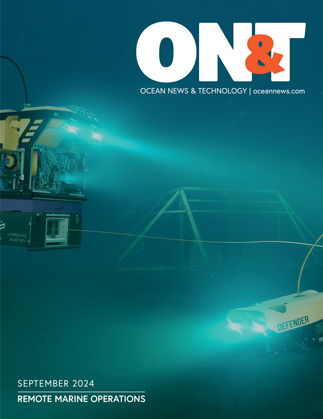As this debate rages, what is often lost in the arguments on both sides is that regardless of the type of energy being extracted or generated, those platforms that are offshore, especially oil rigs, oil and gas pipelines, and wind farms, are incredibly vulnerable to anyone who wants to attack these sources in wartime, or just to make a political statement.
One need look no further than the suspected sabotage of Nord Stream gas pipelines that run from Russia to Europe under the Baltic Sea to understand the vulnerability of sea-based energy sources. Thus, the fossil fuel industry and the green energy industry do have one very real shared interest—the growing need to protect their offshore platforms.
While the exigencies of climate change have led to major strides in the development and fielding of renewable energy sources such as solar, wind, and others, for the foreseeable future, the world’s energy needs will continue to be met primarily by oil and natural gas.
It is the offshore oil and gas industry that still provides a huge amount of the United States’ energy. According to Forbes Magazine, offshore energy production has been increasing over the past decade and now stands at over two-and-one-half million barrels of oil and almost three trillion cubic feet of gas a day.
However, environmental concerns—impelled by major events such as the 2010 Deepwater Horizon disaster in the Gulf of Mexico—have served as a brake on US offshore drilling. And it is worth noting that the second largest marine oil spill in history, the Ixtoc 1 spill, also occurred in the Gulf of Mexico.
INSPECTIONS TODAY
Addressing these environmental worries has been a challenge for the oil and gas industry. Using current technology, this is dull, dirty, and dangerous work that impedes comprehensive inspections of these production rigs. Today, platform operators depend on divers and remotely operated vehicles (ROVs) of various types to perform inspections. This methodology is good as far as it goes, but ROVs have a limited field of view, and putting divers in the water always involves substantial risk and increasingly high cost.
What is sorely needed are technology-enabled solutions that can provide faster and more thorough inspections of these enormously expensive platforms and insure against not only catastrophic disasters like Deepwater Horizon, but also more common issues like wear and tear of underwater components.
On the “green” side of the equation, offshore wind farms have seen explosive growth, and predictions of more wind farms in littoral waters point to continued growth for this industry. Several offshore wind farms are in operation now, and many more are planned. Sadly, there has been little dialogue as to how to protect these expensive assets, and like their “old” energy counterparts—oil rigs—they are, and will remain, highly vulnerable.
USV SENSOR SUITE
Industry has proposed solutions that use unmanned surface vehicles (USVs) to perform both surface and below surface inspections by leveraging USVs that have seen extensive use in military exercises, experiments and demonstrations in both near-shore and open-ocean operations, as well as hundreds of hours of use in a number of civilian missions ranging from canal and dam hydrography, to power plant inspections, to port and harbor security.
As one example, a medium-sized USV (a Devil Ray T38) has been equipped and tested with a wide variety of surface and below-surface sensors such as the SeaFLIR-240 Gyro-stabilized High Definition EO/IR zoom camera, FLIR M364C-LR EO/thermal camera, Teledyne RESON T20 high resolution multi-beam sonar, Teledyne BlueView M900 echo-sounder and Norbit iWBMS STX multi-beam sonar, among others.
This off-the-shelf technology can be used today to effect faster and more complete inspections of offshore oil/gas platforms along with their surrounding bottom mounted pipelines, valves and sensors, as well as offshore wind farms, while dramatically decreasing the need for human divers.
Three primary missions where those responsible for oil rigs, pipelines, or offshore wind farms would utilize this USV inspection concept include:
- For surface investigation, which would include area security, external rig or offshore wind farm structure investigation and surface contact monitoring, a USV could be equipped with a Furuno DRS4D-NXT Doppler Radar and AIS, and could be equipped with a SeaFLIR 280-HDEP Multi-Spectral Surveillance System.
- For underwater imaging, a USV could employ Norbit iWBMS STX multibeam sonar, a forward-looking or side-scan sonar, or any of many other commercial-off-the-shelf underwater sensors.
- Since one of the early indicators of material failure of oil rig components involves oil and other material from the rig seeping into the surrounding water, a USV can be equipped with water-monitoring sensors to include Acoustic Doppler Current Profilers (ADCP), Current-Temperature Depth (CTD) sensors, flourometers and others to detect changes in the water quality, or embedded petroleum products in the immediate vicinity of the rig.
Depending on the mission, operators can control a USV remotely and direct its mission manually or use the USV in an autonomous or semi-autonomous mode to search along a pre-determined course through the use of pre-programmed waypoints.
The same USV technology that is poised to assist the oil and gas and offshore wind farm industries is already being used to inspect critical infrastructure such harbors, ports, inland waterways, dams, levees, canals, bridges and other infrastructure that cannot be safely or effectively inspected by humans.
The enormous investment America’s energy companies have made—and will continue to make—in offshore oil and gas rigs and offshore wind farms is one that these companies must protect against failure, sabotage, or other hazards. Current means of inspecting these rigs are slow, costly, and hazardous. Employing commercial-off-the-shelf USVs that can be rapidly reconfigured with a diverse range of sensors can enhance the ability to deliver energy to America and the world. This is not just a win-win for the energy industry, but a national security priority.
This story was originally featured in ON&T Magazine’s October/November 2023 issue. Click here to read more.

